McCollum-Chidester House
Introduction
Text-to-speech Audio
Images
Frontal view of the home
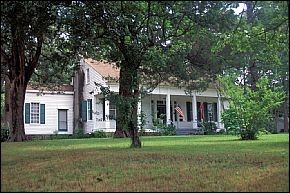
Another view of the home
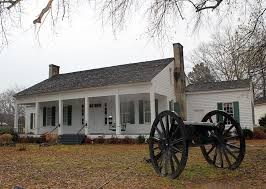
Sign in front of the McCollum-Chidester house
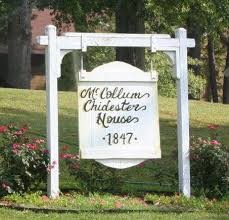
Dining room
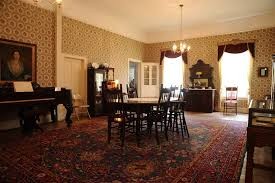
Replica of the Union Field Piece-Cannon which is located across the street from the McCollum-Chidester House.
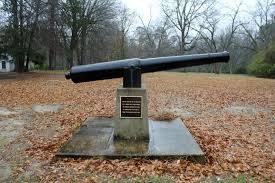
Backstory and Context
Text-to-speech Audio
John Thomas Chidester and his family moved from Tuscumbia, Alabama to Camden, Arkansas in 1857. He and his family moved to Arkansas, in order to increase his stage coach business. He originally worked as a mail carrier and he created Chidester, Rapley and Company which included both mail service and stage lines. This stage coach business linked several different locations together; such as: Gaines Landing, Washington Arkansas, Hot Springs, Trenton, Louisiana, Homer via Magnolia, Lewisville, Pine Bluff, Arkadelphia and Antoine. Since the business was expanding rapidly, John Chidester needed an ideal site that contained enough space for the stage coaches.
When he moved to Camden Arkansas, he spotted a property that he thought contained the perfect amount of land for both his home, and horses for his business. This property was located near the well-traveled trade route during this time period, and was owned by a man named Peter McCollum. The land that the McCollum house is on was purchased with a grant from the United States Government. Mr. McCollum built the house in 1847, and was the first person to build a home with planed lumber. He was also the first person to put wallpaper and an iron cook stove in his home. Mr. McCollum ended up selling his land to Mr. Chidester for $10,000 in gold, when he relocated further west. After Mr. Chidester bought the property, he built an additional two rooms on both wings of the home. He also kept the coaches and horses in a large two story barn on the west side of the house. The stage drivers and any overnight passengers stayed in the two rooms in the upstairs of the house. Mr. Chidester really wanted his business to prosper, and it did. It expanded to over nearly sixty Concord stages with 2,000 horses, and three hundred workers.
In the spring of 1864, Federal troops began to occupy Camden Arkanasas, and General Frederick Steele made the McCollum-Chidester house his headquarters. Mr. Chidester’s wife buried her silverware, china, pewter and jewelry under a chinaberry tree in the yard before the troops arrived. The family monies were hidden in a belt worn by a servant. The Confederates shelled the house forcing Mrs. Chidester’s children to hide under their beds in order to protect themselves. Shortly after General Steele took over the McCollum-Chidester house, he and his troops moved closer into town for better protection.
Mr.
Chidester was accused of rummaging through federal mail in an attempt to inform
the Confederacy of state secrets. Therefore, he was considered a spy and the
Union troops returned to his home in search of him, but he was able to hide in the
house’s small attic and the troops were unable to find access to the room to
take custody of him. They fired shots in the wall, and the bullet holes remain
there today. Mr. Chidester managed to escape to Texas, where he stayed until he
was offered forgiveness for the war crimes he allegedly committed.
The
stagecoach business managed to recuperate after the war ended in 1878. Mr. Chidester’s
stage line was the longest single stage route during this time period; it ran
from Fort Worth, Texas to Yuma, Arizona. The McCollum-Chidester House became
the fundamental mail station of the Butterfield Overland Stage Route. In 1963,
After Mr.Chidester and his wife passed away, two of their sons; Dan and Tom
sold the house to the Ouachita County Historical Society, who then transformed
it into a museum.
According to Becky Davis, an employee at this museum, there have been no renovations or restorations to the house; it is in the same condition it was when it was occupied. However, there is a handicap ramp near the rear of the home. All of the furnishings are the same, and there is a bedroom and a parlor downstairs and two bedrooms upstairs. There are no sections in the house designated for children. Some of the distant relatives to the previous owners of the house still live nearby.
